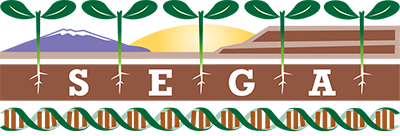You are here
Arthropod communities on hybrid and parental cottonwoods are phylogenetically structured by tree type: Implications for conservation of biodiversity in plant hybrid zones.
Publication Type:
Journal ArticleSource:
Ecology and evolution, Volume 7, Issue 15, p.5909 - 5921 (2017)URL:
http://www.ncbi.nlm.nih.gov/sites/entrez?Db=pubmed&DbFrom=pubmed&Cmd=Link&LinkName=pubmed_pubmed&LinkReadableName=Related%20Articles&IdsFromResult=28808554&ordinalpos=3&itool=EntrezSystem2.PEntrez.Pubmed.Pubmed_ResultsPanel.Pubmed_RVDocSumhttp://www.ncbi.Abstract:
<p>Although hybridization in plants has been recognized as an important pathway in plant speciation, it may also affect the ecology and evolution of associated communities. Cottonwood species (Populus angustifolia and P. fremontii) and their naturally occurring hybrids are known to support different plant, animal, and microbial communities, but no studies have examined community structure within the context of phylogenetic history. Using a community composed of 199 arthropod species, we tested for differences in arthropod phylogenetic patterns within and among hybrid and parental tree types in a common garden. Three major patterns emerged. (1) Phylogenetic diversity (PD) was significantly different between arthropod communities on hybrids and Fremont cottonwood when pooled by tree type. (2) Mean phylogenetic distance (MPD) and net relatedness index (NRI) indicated that communities on hybrid trees were significantly more phylogenetically overdispersed than communities on either parental tree type. (3) Community distance (Dpw) indicated that communities on hybrids were significantly different than parental species. Our results show that arthropod communities on parental and hybrid cottonwoods exhibit significantly different patterns of phylogenetic structure. This suggests that arthropod community assembly is driven, in part, by plant-arthropod interactions at the level of cottonwood tree type. We discuss potential hypotheses to explain the effect of plant genetic dissimilarity on arthropod phylogenetic community structure, including the role of competition and environmental filtering. Our findings suggest that cottonwood species and their hybrids function as evolutionarily significant units (ESUs) that affect the assembly and composition of associated arthropod communities and deserve high priority for conservation.</p>
- Log in to post comments
- Google Scholar
- RTF
- EndNote XML
- RIS
Theme by Danetsoft and Danang Probo Sayekti inspired by Maksimer
